Sloth Search
In the midst of the verdant Tambopata reserve, a curious quest beckons nature enthusiasts and wildlife aficionados alike. The enigmatic allure of sloths, with their languid movements and mysterious habits, captivates minds and hearts.
As the journey unfolds, the intricate details of sloth ecology and behavior come to light, offering a glimpse into a world where time seems to slow down.
But what secrets lie hidden within the depths of the forest, waiting to be uncovered by those who dare to venture further into the realm of the sloth?
Key Points
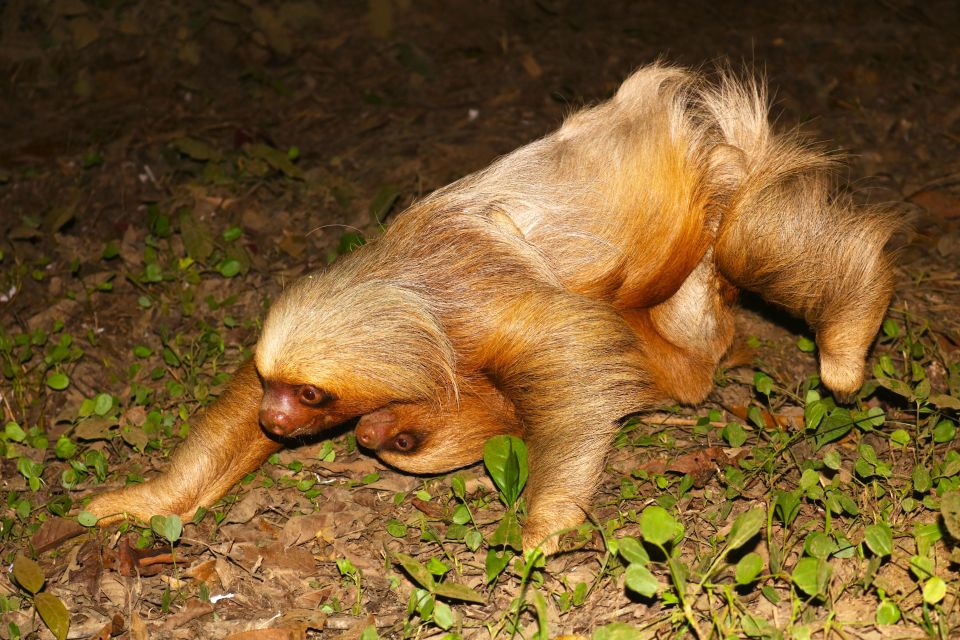
- Sloths are expert tree dwellers, rarely descending to the forest floor.
- Conservation efforts focus on rehabilitating injured or orphaned sloths.
- Patience and keen observation are essential for successful sloth spotting.
- Sloths’ slow movements and algae-covered fur aid in their camouflage.
Here's some more nearby activities we've reviewed
Unique Traits of Sloths
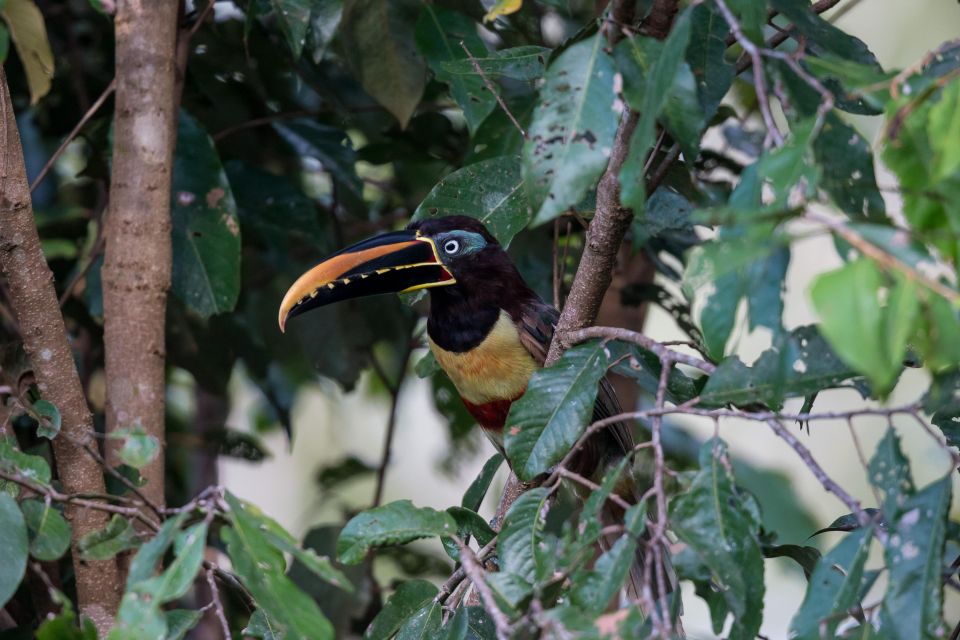
Sloths possess fascinating characteristics that set them apart from other animals in the animal kingdom. These creatures have a unique diet primarily consisting of leaves, twigs, and buds. Their slow metabolism allows them to extract the minimal energy needed from these low-nutrient foods, making them perfectly adapted to their environment.
Sloths’ adaptations also include their slow movements, which help them conserve energy and avoid predators. Their long claws aid in gripping onto tree branches, where they spend most of their time hanging upside down. This distinctive lifestyle not only protects them from predators but also helps regulate their body temperature.
Sloths truly showcase remarkable adaptations that enable them to thrive in their tropical forest habitat.
Sloth Habitat and Behavior
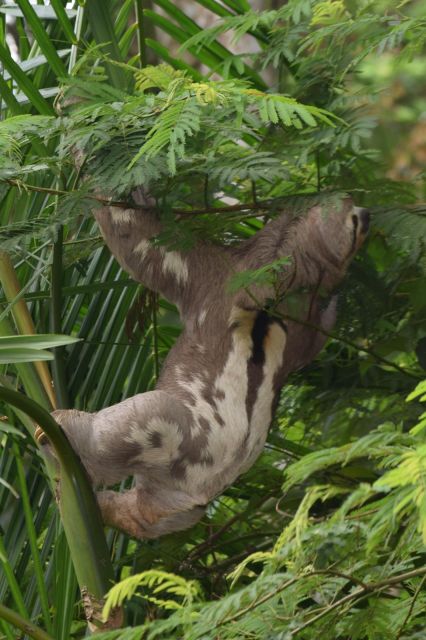
In their lush tropical habitat, sloths exhibit fascinating behaviors and adaptations that contribute to their unique way of life. These slow-moving creatures have adapted to thrive in the tropical ecosystem, showcasing interesting sleep patterns and habits:
- Sloths have a low metabolic rate, allowing them to conserve energy efficiently.
- They spend up to 16 hours a day sleeping, primarily hanging upside down from tree branches.
- Sloths are expert tree dwellers, rarely descending to the forest floor.
- Their slow movements and algae-covered fur help camouflage them in the dense foliage of the tropical forest, aiding in their survival.
Sloth Spotting Tips
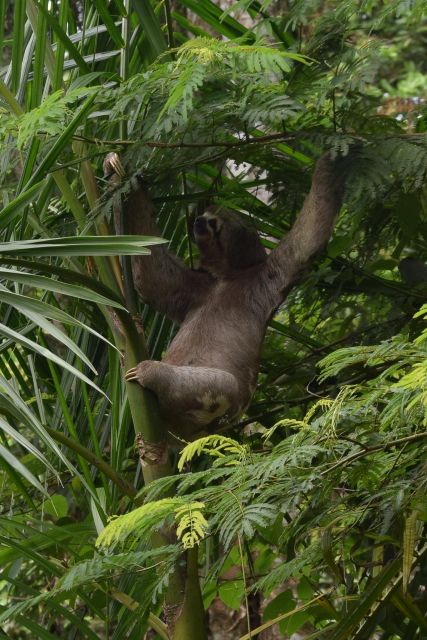
With keen observation and a patient mindset, visitors can enhance their chances of spotting these elusive sloths during the tour in the Tambopata reserve.
To increase the likelihood of encountering these slow-moving creatures, there are some best practices and spotting techniques to keep in mind. Firstly, scanning the treetops carefully for any signs of movement or unusual shapes can lead to a successful sighting. Sloths often blend seamlessly with the tree branches, so a keen eye is essential.
Plus, listening for any rustling sounds or following the direction of local guides who are experienced in spotting sloths can be advantageous. Remember, patience is key when searching for these masters of camouflage in their natural habitat.
Conservation Efforts for Sloths
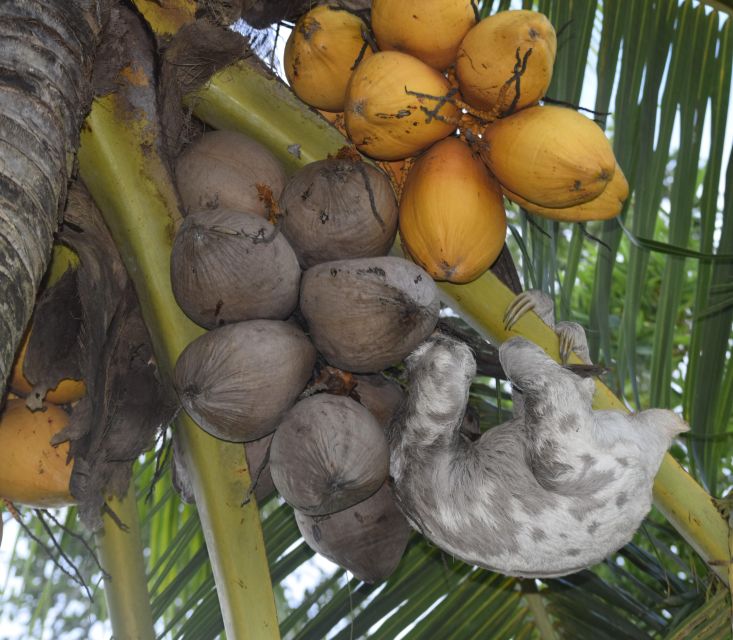
Conservation efforts for sloths are crucial in safeguarding the delicate balance of their tropical forest ecosystem. Sloth populations face various threats, making it essential to implement measures for their protection and well-being.
-
Sloth rehabilitation: Providing care and support for injured or orphaned sloths to reintroduce them back into the wild.
-
Sloth population control: Monitoring and managing sloth populations to prevent overcrowding and ensure sufficient resources for their survival.
-
Habitat conservation: Preserving and restoring the sloths’ natural habitat to maintain a healthy environment for their existence.
-
Community involvement: Engaging local communities in conservation initiatives to raise awareness and promote sustainable practices that benefit sloths and their ecosystem.
Enhancing Your Sloth Encounter
To maximize your sloth encounter experience, consider ways to actively participate in their natural habitat exploration and observation. When visiting a sloth sanctuary or rehabilitation center, visitors have the opportunity to engage in various activities that can enhance their interaction with these fascinating creatures. One popular activity is sloth photography, where you can capture their unique behaviors and expressions. Observing sloths in their natural habitat allows you to witness firsthand how they navigate their surroundings with slow and deliberate movements. Plus, learning about sloth behavior from knowledgeable guides can provide insight into their habits and lifestyle. By enjoying the sloth sanctuary environment, you can gain a deeper appreciation for these incredible animals.
| Activity | Description | Benefits |
|---|---|---|
| Sloth Photography | Capture sloths in their natural habitat | Create lasting memories |
| Behavior Observation | Learn about sloth behavior and habits | Gain insight into their lifestyle |
| Sanctuary Exploration | Visit sloth sanctuary or rehabilitation center | Support conservation efforts |
Here's a few more nearby tours and experiences we have reviewed.
Common questions

How Do Sloths Defend Themselves From Predators in the Wild?
In the wild, sloths defend themselves through camouflage techniques and defensive behaviors. Their slow movement and cryptic coloration help them blend into the surroundings, making it challenging for predators to spot them easily, increasing their chances of survival.
What Is the Average Lifespan of a Sloth in Its Natural Habitat?
In its natural habitat, a sloth’s average lifespan is around 20-30 years. Their longevity is attributed to their slow metabolism and low-energy lifestyle. Sloths have adapted to tree-dwelling in tropical forests, relying on camouflage and slow movements for survival.
Do Sloths Have Any Natural Predators Besides Humans?
Sloths, due to their slow pace and excellent camouflage, have few natural predators besides humans. Conservation initiatives work to protect these unique creatures, highlighting sloth behavior and the importance of preserving their natural habitats.
How Do Sloths Communicate With Each Other in the Wild?
In the wild, sloths communicate through a combination of vocalizations and body language. Their social behavior involves grooming each other, reinforcing bonds, and maintaining relationships. These interactions are essential for their survival and well-being.
Are There Any Specific Threats to Sloth Populations in the Tambopata Reserve?
Habitat destruction and climate change pose significant threats to sloth populations in the Tambopata reserve. Plus, poaching and illegal wildlife trade exacerbate these challenges, endangering the unique and slow-paced creatures that call this biodiverse area home.
Here's more of our most recent tour reviews happening neaby
- 3 Days 2 Nights – Tambopata Jungle
- 3 Day Tambopata Amazon Jungle Tour at Inkaterra Reserva Amazónica
- 3 Day Tambopata Amazon Jungle Tour at Hacienda Concepción
- 4-Day Amazon Jungle Tour at Eco Amazonia Lodge
- 3-Day Amazon From Puerto Maldonado With Eco Lodge Accommodation
- 3 Hours Private Piranha Fishing in Lake Yacumama
- From Madre De Dios Night Trekking in the Amazon Jungle
- From Tambopata: Amazon Jungle Hike and Lake Sandoval 1-Day
- Collpa Guacamayo 2D Excursion Jungle Sunset
- From Tambopata: Parrots and Macaws Clay Lick
- Puerto Maldonado: 4-day Tambopata National Reserve
Last Words
To sum it up, the ‘Sloth Search’ tour in Tambopata reserve offers a thrilling and educational experience for visitors eager to encounter these fascinating creatures in their natural habitat.
With expert guides, stunning scenery, and a high chance of spotting sloths and other wildlife, this adventure is sure to leave a lasting impression.
Don’t miss the opportunity to witness the wonders of the rainforest and contribute to the conservation efforts for these unique animals.
More Great Things To Do Nearby